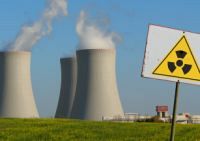

Up to £25 million is to be spent on retrieving the most dangerous radioactive particles that escaped from the Dounreay nuclear plant in Scotland 40 years ago, and are now embedded in the seabed. Hundreds of thousands of particles are believed to have been dispersed from the Caithness plant in the early 1960s but so far only around 1,400 have been found since monitoring began in 1983. Most are the size of a grain of sand, but others have been recovered of up to 6mm in length.
The UK Atomic Energy Authority (UKAEA) is convinced they are fragments from aluminium-uranium radioactive fuel rods which were being reprocessed at Dounreay and should have gone to storage pools with other waste awaiting solidification. Instead, they ended up in the drains and went into the diffuser system. We reported in the March 2007 Monthly Bulletin that UKAEA were fined around £140,000 for their unauthorised release, but this month they have revealed a seven-year remedial plan, which, if approved, could begin within a year.
It proposes that over the next three summers remotely operated vehicles working from a ship will scour an area of the seabed equivalent to 60 football pitches where the estimated 2,500 most hazardous particles are located. When found, they will be removed using a suction system which is still being developed. Remedial work will be carried out during the fourth summer on the old diffuser, from where the particles are believed to have escaped. This lies 25 metres beneath the seabed, and a jack-drilling rig may have to be deployed to access it. The final three summers will be used for rechecking and further recovery, if necessary.
Geoffrey Minter, owner of the Sandside Estate who successfully took legal action against UKAEA over the incident said, "At long last, but not without huge effort on the part of my private team, we have moved from a decade of denial to a declaration of duty and good intention. We do seem to be genuinely entering a new era."